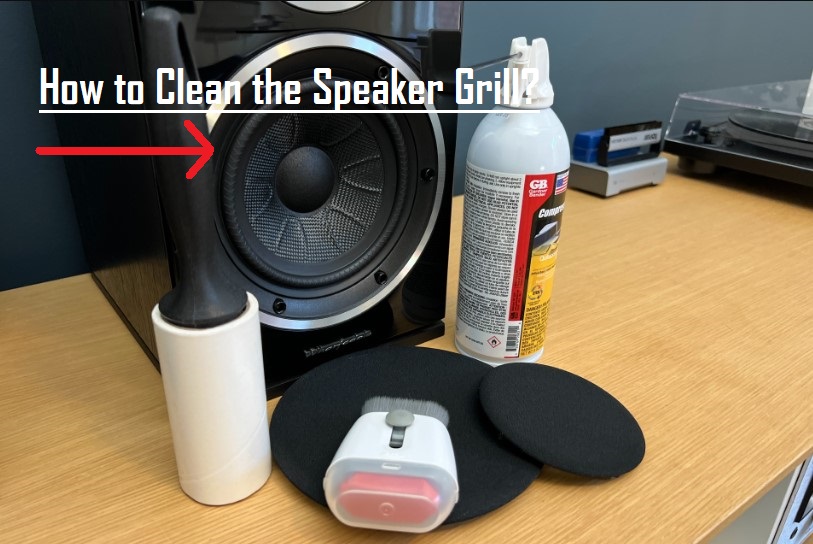Speaker grills are a lovely and effective way to hide and protect the speaker drivers beneath them, but they can get dirty, dusty, and even stained with time and should be cleaned regularly. Don’t panic, this article will guide you through how to clean the speaker grill. Cleaning a speaker grill may appear to be a no-brainer, but there are a few simple tips and practices that may not be immediately apparent but can make cleaning a speaker cloth easier, more successful, and safer for the speakers.
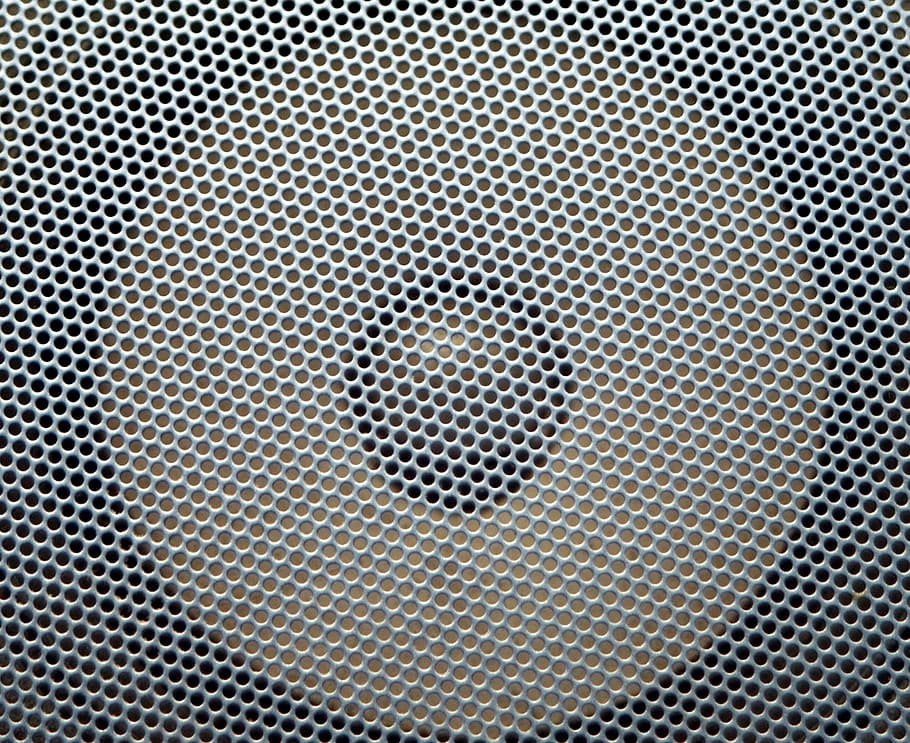
We’ll go through how to dust, wet wash, remove mold, and dry speaker grills properly in this lesson on the best ways to clean speaker cloth, as well as a quick explanation of how to replace discolored or broken speaker cloth. We’ll also show you how to clean an iPhone or other phone’s speaker grill.
What’s the Importance of Cleaning Grill?
Cleaning your speaker covers properly is not only important for overall health and hygiene, especially for anyone with allergies or asthma (they can collect a lot of dust), but it can also improve the look of your speakers, improve the sound of your system, and even prevent damage to the speakers themselves.
Stereo speakers are usually made of wood or plastic and have speaker components within them. Manufacturers frequently install cloth grills on the front of speakers for decoration and to avoid dust and other particles from collecting on the actual speakers. These grills can attract dust, pet hair, and other materials that can be found in most homes. The grill cloths on many speakers are attached to a frame that may be removed from the speaker. Although this makes cleaning easier, it is not required in most cases.
What is the purpose of a Speaker Grill?
A speaker grill is a front-of-the-speaker cover that conceals and protects the front of the speaker cabinet to mounted speaker drivers (such as the tweeter and woofer). A speaker grill is designed to not only protect the speakers, but also to be “acoustically transparent,” which means that the fabric or other material of the speaker grill will allow all of the music to pass through without blocking, muffling, or otherwise degrading the sound quality.
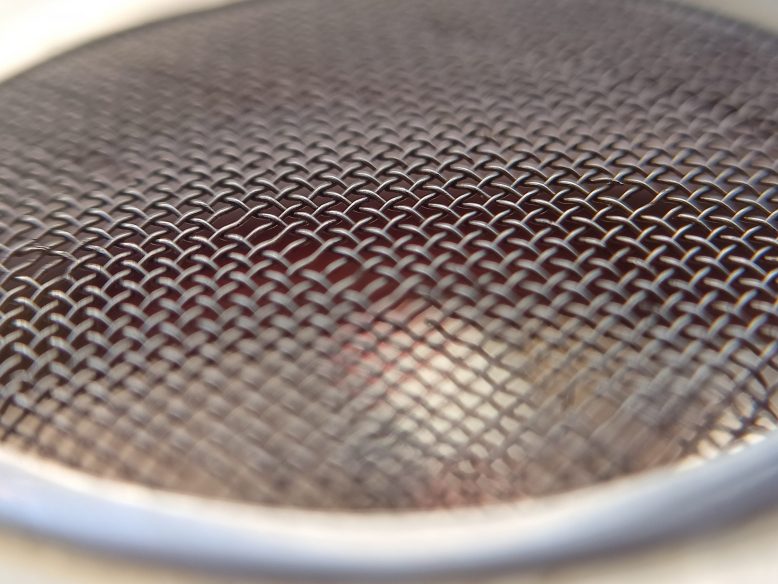
Various Types of Speaker Grills and Their Precautions
Removable or non-removable speaker grills made of foam or cloth may be found on your speakers. However, most high-quality Stereo and home theater speakers – even those that aren’t as pricey – feature removable grills that are covered with cloth.
- Some of the cleaning procedures discussed below include removing the speaker grills, so double-check that your speakers’ grills are indeed removable. Even some high-end audiophile speakers come with permanently affixed grills and grill cloths that are not intended to be removed.
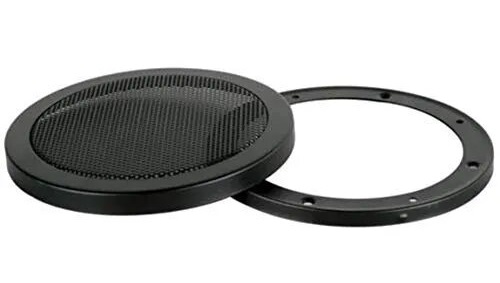
- Always apply mild pressure to your speaker grills when attempting to remove them. Never try to force them off, and if they don’t come off easily, stop trying since too much force can damage the grill frames or the speakers. If you’re unsure whether or not your speaker grills are removable, you can ask the manufacturer.
How to Clean the Speaker Grills Safely and Effectively
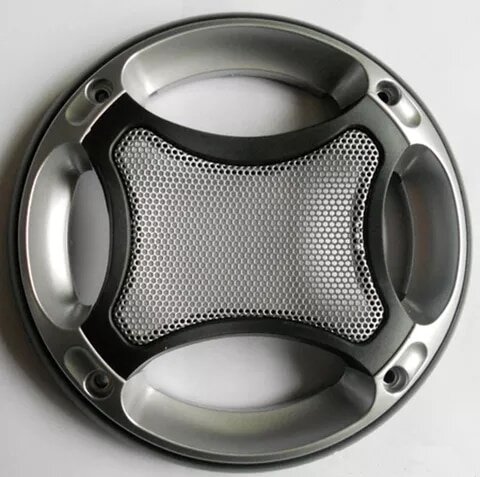
Technique-1: Vacuuming
Vacuuming can be a very effective approach to removing dust from the cloth of a speaker grill, but we must be cautious because a vacuum can easily harm speaker drivers. Before using a vacuum, it is recommended that you remove the speaker grills and move them away from the speakers. If the grills aren’t removable, use a low-powered vacuum, and don’t let the vacuum wand come close to or touch the speaker drivers.
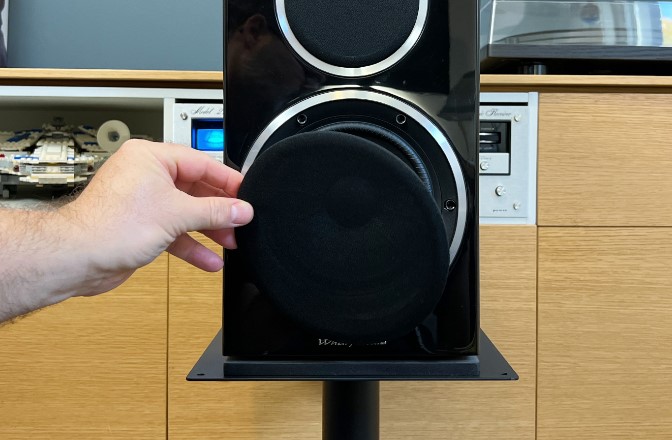
Technique-2: Dusting
Dusting your speaker clothes, as well as the speaker cabinets and even the speaker drivers, should be done regularly. You must remove the speaker grills first (if they’re removable) before dusting them to keep the dust away from the speaker drivers and prevent them from damage. On the grills, you can use a moist cloth, a dry dusting cloth, or a feather duster, but never use a damp cloth on the speaker cabinets, as water will drip, well up, or get on the drivers, the rear wires, any knobs, switches, or other electric or electronic equipment.
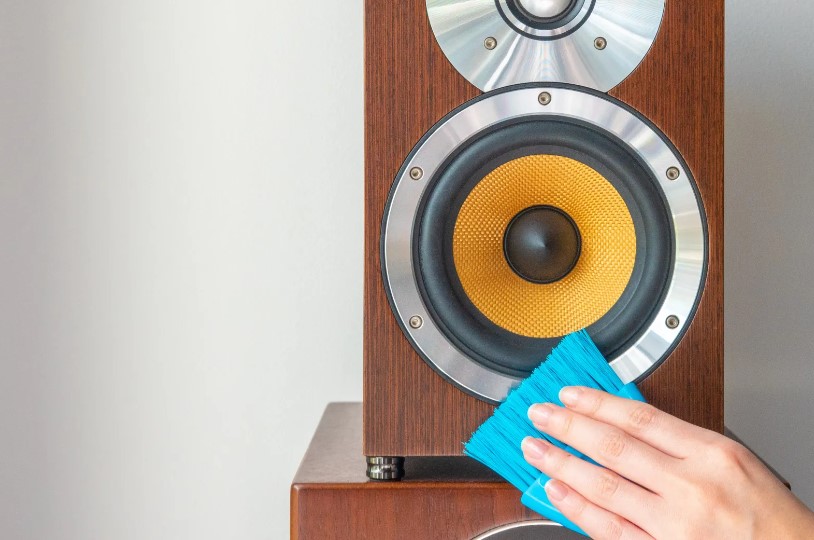
Never, ever, ever use a damp towel or water on the actual speaker drivers. On all components of their speakers, most audiophiles like to use simply a dry feather duster with extremely minimal pressure. If you want to dust the speaker drivers, do it with a dry, extremely soft cloth or a feather duster, and apply only light pressure to avoid damaging them.
Technique-3: Wet Cleaning Cloth for Speakers
If your speakers are stained or dusty, and dusting or vacuuming aren’t cutting it, you can deep clean the speaker fabric with soapy water. You can either use a wet, soapy sponge or cloth or set up a large tray filled with soapy water large enough to hold the speaker grills and soak the grill cloth.
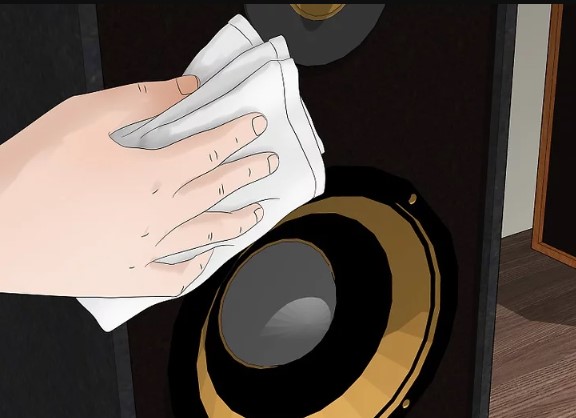
After you’re finished, carefully rinse the speaker cloth with clean water and dry it in the sun or with a fan. Remove the speaker grills from the speakers while they are still wet or moist, and let them dry completely – using a fan or sunshine if possible – to eradicate and avoid mold. If your speaker grill fabric has mold, you can use the procedure above to soak it in water with a high concentration of vinegar, but make sure to properly clean and dry it afterward – again, using a fan or sunshine.
How to Clean Speaker Grill on a Phone
Regardless of whether you have an iPhone, an Android, or another sort of cellular phone, you should clean the grill over the speaker – especially given how much this area of the phone comes into touch with your ear. The user’s manual for your phone should include advice on how to clean it safely, but the most essential thing to remember is that electronics, particularly speaker drivers, do not like water.
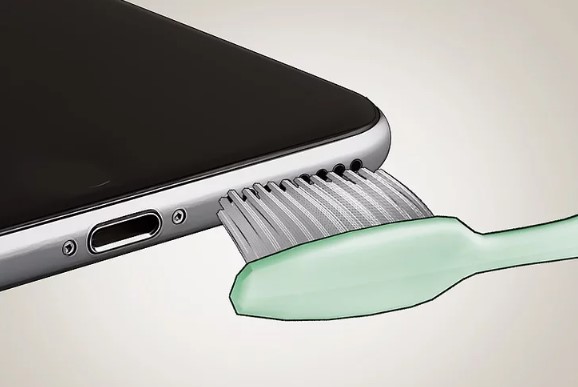
If you use a moist cloth, which can be effective, make sure it is completely wrung dry and that no water drops or collects anywhere on the phone. Make certain that no water can get into or through the speaker grill and into the speaker itself.
Speaker Cones: How to Clean Them
As previously stated, speaker drivers, such as woofer cones and tweeter domes, are extremely fragile and readily broken. Dust speaker cones and domes with a soft, fully dry cloth or a feather duster, applying no pressure. Never use water or a moist cloth on speaker drivers, even if the material appears to be plastic or water-resistant, and never use a vacuum or canned air on them.
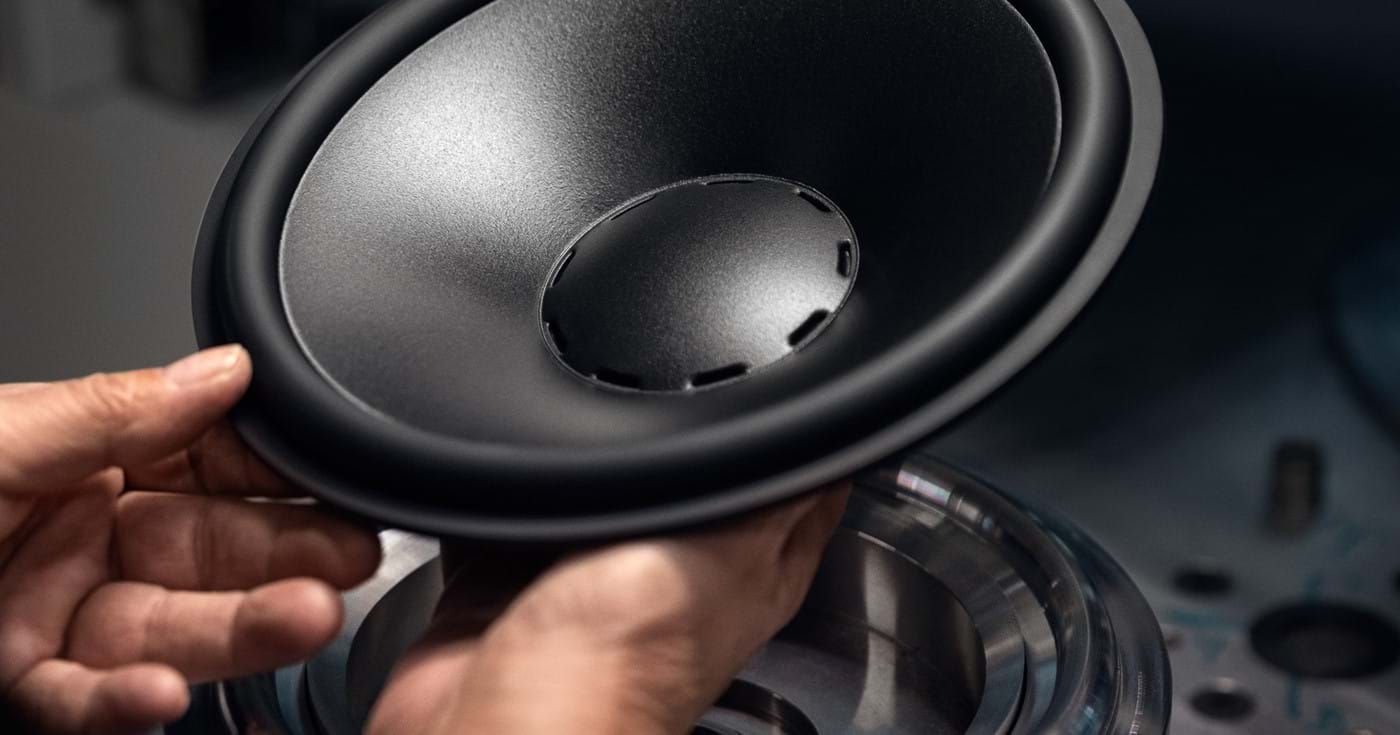
How to Clean Speaker Cabinets Safely
You might also want to clean your speaker cabinets while you’re cleaning. You can clean it the same way you would any other good piece of furniture – just keep in mind that many speaker cabinets are covered in a high-quality wood veneer, which you should maintain and care for carefully.
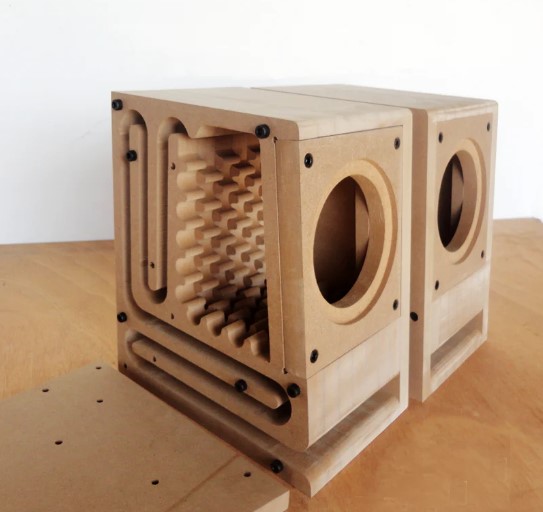
If you use water, be sure you use a damp cloth that has been properly wrung out, with no extra water or dripping, and make sure no water drips on or contacts the speaker drivers, speaker terminals, or cables on the rear, or any knobs, switches, or other electric or electronic elements.
Conclusion
Cleaning speaker grills extends your speakers’ life and ensures that they are always in gleaming, flawless condition. This instruction should have answered your question regarding how to clean the speaker grill independently. If you found this tutorial useful, please share it with your audiophile friends who want to keep their systems running like new.
Here are some of the best-powered speakers with cabinets right now in the market:
- JBL Professional EON710 Powered PA Loudspeaker
- PylePro Portable Cabinet PA Speaker System
- Gemini Sound AS-08TOGO
- Alto Professional TX310
- Yamaha DBR Series DBR15
- Rockville BPA8 8″ Professional PA Speaker
- Electro-Voice EVERSE 8 8″
- Behringer B105D 50W
Check out more of the blogs section:
- How Does a Wireless Subwoofer Work?
- How Does Wireless Surround Sound Work?
- 2-Way vs 3-Way Car Speakers Which is Better?
- Are Component Speakers Better?
- How Long do Speaker Crossovers Last?
FAQs – How to Clean the Speaker Grill
How do I get the dust off my phone speaker grill?
Use a soft-bristled brush, like a clean toothbrush or paintbrush, to gently clean the speaker grilles. Brush at an angle to push the dirt out rather than pushing it further into the device.
How do you remove rust from speaker grills?
You can use a paste made of vinegar and baking soda to dissolve the rust or a scrub made from lemon juice and salt. Both methods are effective rust removers due to their acidic properties.
How do you get sand out of a speaker grill?
Use a detailing or paintbrush with long bristles to poke through the speaker grille and loosen the sand. Hold a vacuum close to the area to suck the sand out as you agitate it.
Can dust damage phone speakers?
Yes, dust can gradually damage phone speakers, reducing their lifespan. Regular cleaning helps protect them from dust-related issues.
Does vinegar remove rust from a grill?
Yes, vinegar combined with salt can effectively remove rust. Soak the rusty area in a mixture of distilled white vinegar and salt, which dissolves oxidized metal, making it easier to scrub off.
How do you clean speaker holes?
Gently insert the sharp end of a wooden or plastic toothpick into the speaker holes without applying too much pressure. Once you feel resistance, tilt the toothpick slightly sideways and upward as you pull it out to flick out the debris.
How do you clean grill mesh?
Soak the mesh grill in a solution of half a cup of vinegar and one teaspoon of salt for 20 minutes. After soaking, clean the mesh thoroughly, and then rinse it off.

